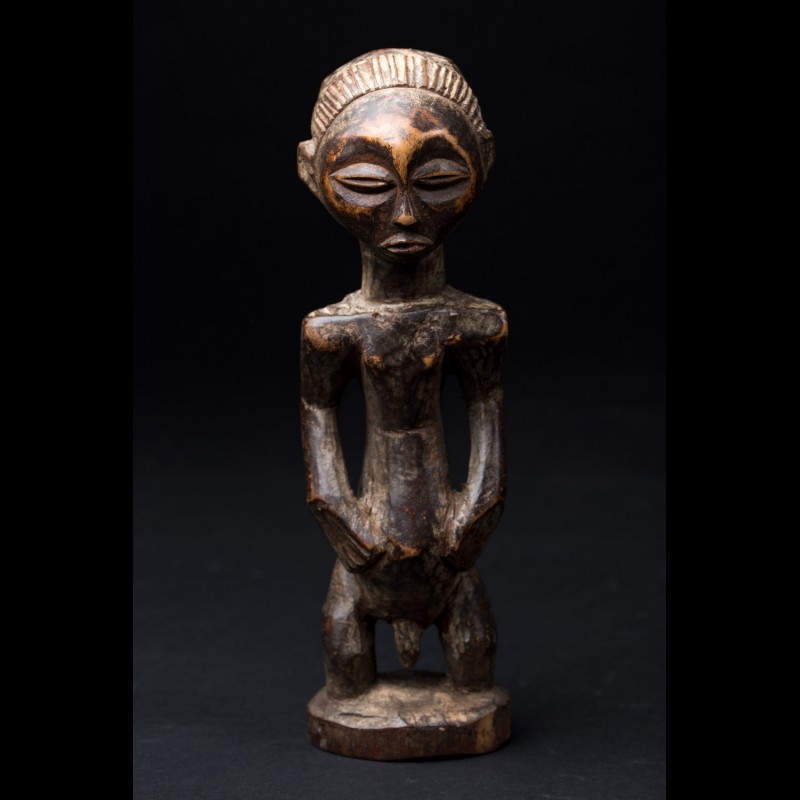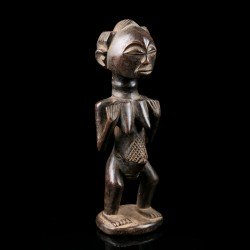







Luba, also called Baluba, a Bantu-speaking cluster of peoples who inhabit a wide area extending throughout much of south-centralDemocratic Republic of the Congo. They numbered about 5,594,000 in the late 20th century. The name Luba applies to a variety of peoples who, though of different origins, speak closely related languages, exhibit many common cultural traits, and share a common political history with past members of the Luba empire, which flourished from approximately the late 15th through the late 19th century. (See Luba, Lunda States.) Three main subdivisions may be recognized: the Luba-Shankaji of Katanga, the Luba-Bambo of Kasai, and the Luba-Hemba of northern Katanga and southern Kivu. All are historically, linguistically, and culturally linked with other Congo peoples. The Shankaji branch is also connected with the early founders of the Lunda empire.Among the most-important components of the Luba religion, three important figures constitute the supernatural world: Leza (Supreme God), mikisi or bavidye (various spirits), and bankambo (ancestors). In the world of the living, the main figures are kitobo or nsengha (priest), the nganga (healer), and the mfwintshi (the witch, the embodiment of evil and the antithesis of the will of the ancestors).Religious activities include prayers, praise songs and formulas, dances, sacrifices, offerings, libations, and various rituals, including cleansing or purification and rites of passage. Besides prayers and invocations, means of communication with the divine include the interpretation of dreams and especially the practice of lubuko (divination) to consult the will of the ancestors before any important decision or to know the causes of misfortune.
Data sheet
You might also like

Luba, also called Baluba, a Bantu-speaking cluster of peoples who inhabit a wide area extending throughout much of south-centralDemocratic Republic of the Congo. They numbered about 5,594,000 in the late 20th century. The name Luba applies to a variety of peoples who, though of different origins, speak closely related languages, exhibit many common cultural traits, and share a common political history with past members of the Luba empire, which flourished from approximately the late 15th through the late 19th century. (See Luba, Lunda States.) Three main subdivisions may be recognized: the Luba-Shankaji of Katanga, the Luba-Bambo of Kasai, and the Luba-Hemba of northern Katanga and southern Kivu. All are historically, linguistically, and culturally linked with other Congo peoples. The Shankaji branch is also connected with the early founders of the Lunda empire.Among the most-important components of the Luba religion, three important figures constitute the supernatural world: Leza (Supreme God), mikisi or bavidye (various spirits), and bankambo (ancestors). In the world of the living, the main figures are kitobo or nsengha (priest), the nganga (healer), and the mfwintshi (the witch, the embodiment of evil and the antithesis of the will of the ancestors).Religious activities include prayers, praise songs and formulas, dances, sacrifices, offerings, libations, and various rituals, including cleansing or purification and rites of passage. Besides prayers and invocations, means of communication with the divine include the interpretation of dreams and especially the practice of lubuko (divination) to consult the will of the ancestors before any important decision or to know the causes of misfortune.


